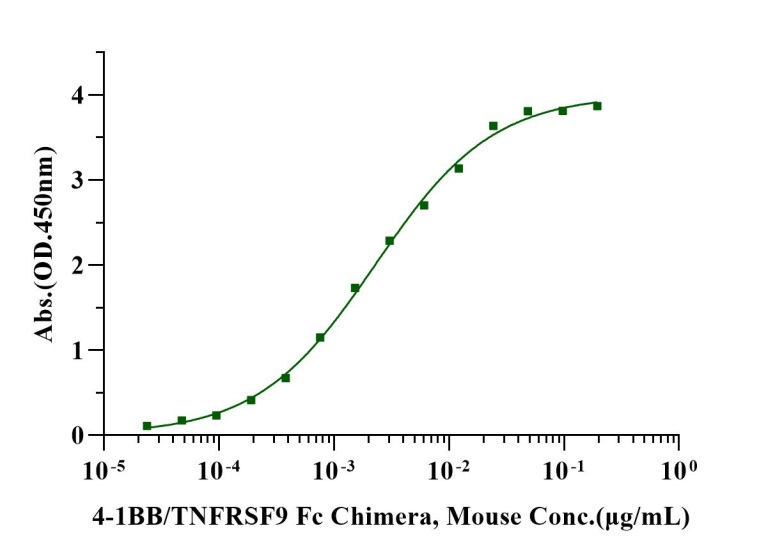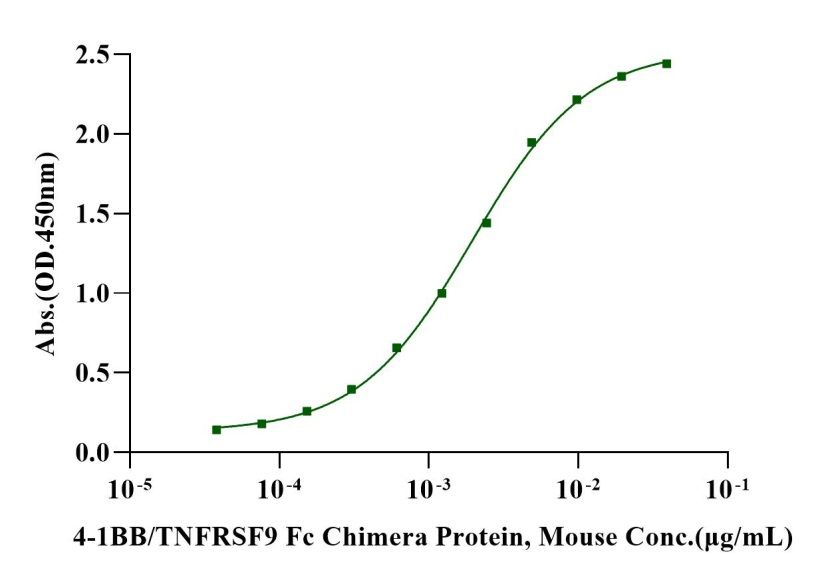53-63kDa (Reducing)
Reconstitute at 0.1-1 mg/ml according to the size in ultrapure water after rapid centrifugation.
Melero I, et al. (2008) Multi-layered action mechanisms of CD137 (4-1BB)-targeted immunotherapies. Trends Pharmacol Sci. 29(8): 383-90. 2. Thum E, et al. (2009) CD137, implications in immunity and potential for therapy. Front Biosci. 14: 4173-88.
CD137 (also known as 4-1BB) is a surface co-stimulatory glycoprotein originally described as present on activated T lymphocytes, which belongs to the tumor necrosis factor (TNF) receptor superfamily. CD137 can be expressed by activated T cells, but to a larger extent on CD8 than on CD4 T cells. In addition, CD137 and CD137L are expressed in different human primary tumor tissues, suggesting that they may influence the progression of tumors. The best characterized activity of CD137 is its costimulatory activity for activated T cells.
1μg (R: reducing condition, N: non-reducing condition).

Immobilized 4-1BB Ligand/TNFSF9 His Tag, Rat (Cat. No. UA010859) at 2.0μg/mL (100μL/well) can bind 4-1BB/TNFRSF9 Fc Chimera, Mouse(Cat. No. UA010800) with EC50 of 1.97-2.67ng/mL.

Immobilized 4-1BB Ligand TNFSF9 His tag Protein,Mouse at 2.0μg/mL (100μL/well) can bind 4-1BB/TNFRSF9 Fc Chimera Protein, Mouse(Cat. No. UA010800) with EC50 of 1.79-2.13ng/mL.

Protein A Chip captured 4-1BB/TNFRSF9 Fc Chimera, Mouse (Cat. No. UA010800), can bind 4-1BB Ligand/TNFSF9 His Tag, Rat (Cat. No. UA010859) with an affinity constant of 1.60nM as determined in SPR assay.